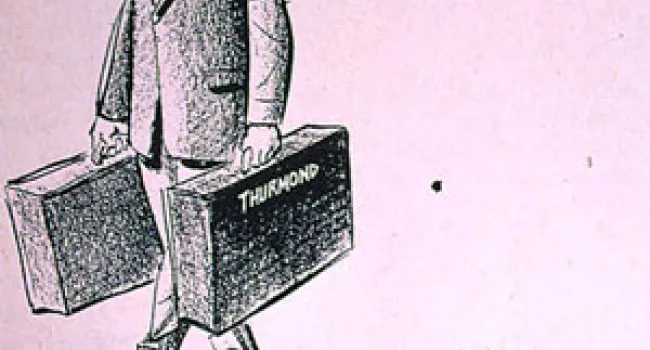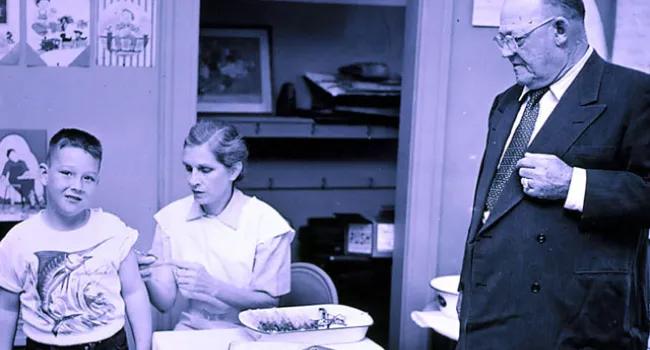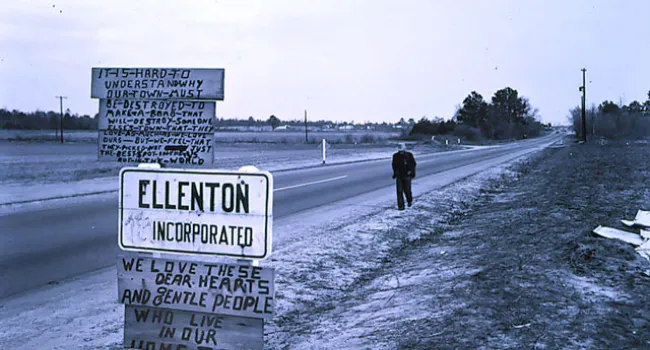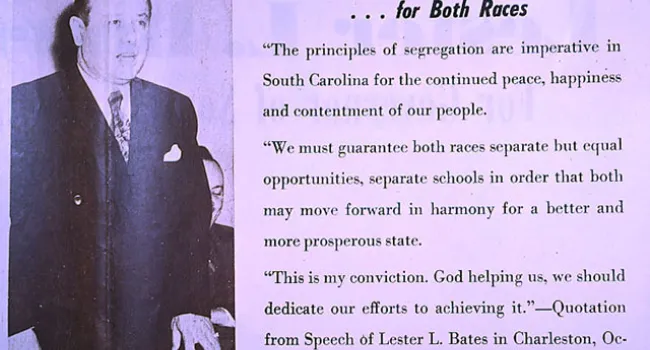
Henri Monteith Treadwell (age 17), James Solomon (age 33) and Robert Anderson (age 19), speaking to news media after registering in September 1963 as the first African-American students at the University of South Carolina since Reconstruction. The successful integration of both major public universities in South Carolina without violence was due in part to the joint efforts of many: the South Carolina Christian Action Council, Governors Donald Russell and Ernest F. Hollings, the NAACP, and the presidents of the two universities. Photograph by Vic Tutte.
Courtesy of "The State" newspaper.
Standards
- This indicator was developed to promote inquiry into how the lifestyles of those living in capitalist countries differed from those living in communist countries. This indicator was also designed to promote inquiry into how the rights of citizens differed in capitalist and communist countries.
- This indicator was designed to foster inquiry into the role of South Carolina in the Modern Civil Rights Movement, to include the influence of court cases such as Briggs v. Elliot and Flemming v. South Carolina Electric and Gas. This indicator was also developed to promote inquiry into the relationship between national leadership, protests, and events and South Carolina leadership, protests and events, such as the Friendship Nine and the Orangeburg Massacre.
- This indicator was developed to encourage inquiry into civic engagement, such as military service, public demonstrations, and political activism, to shape the identity of modern South Carolina. This indicator was also written to encourage inquiry into South Carolinians’ use of the court system and legislation to affect South Carolina’s post-World War II identity.











